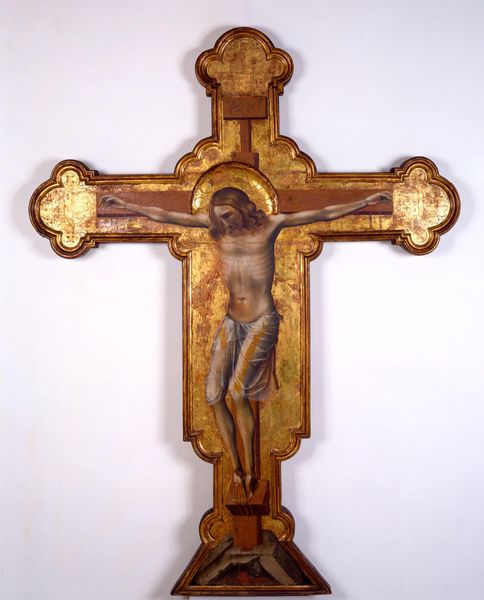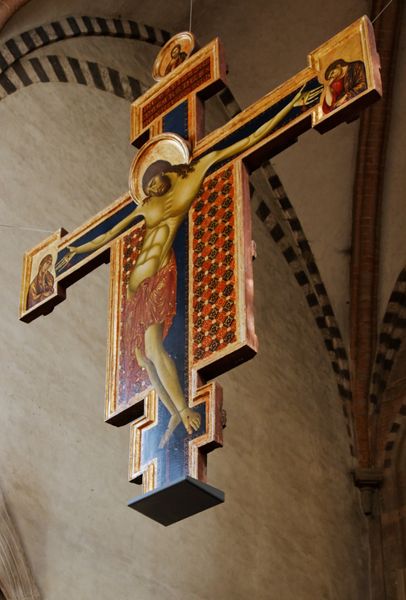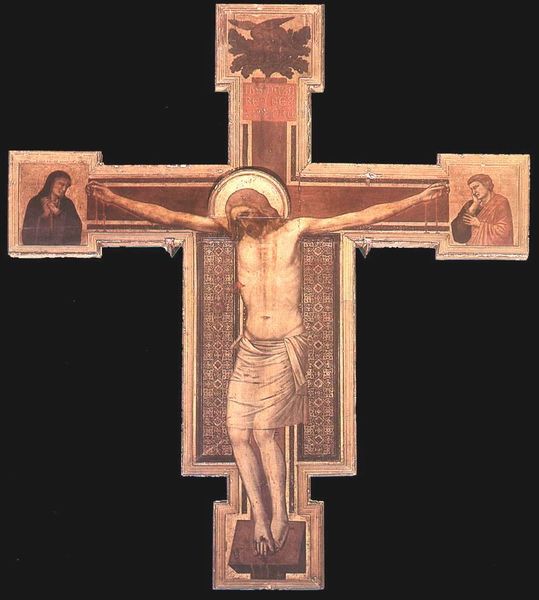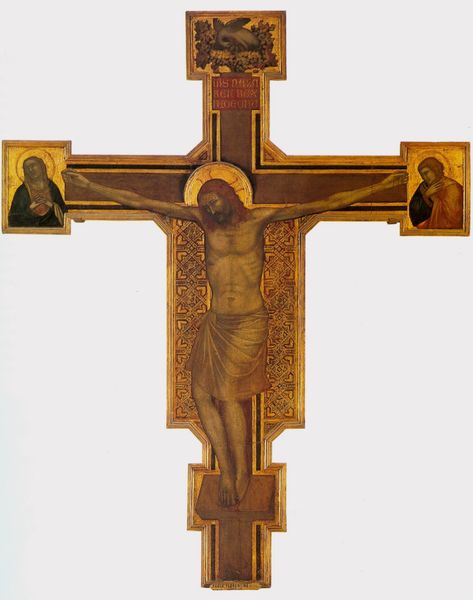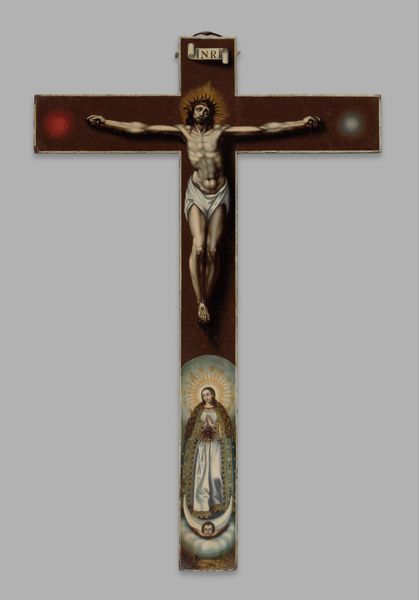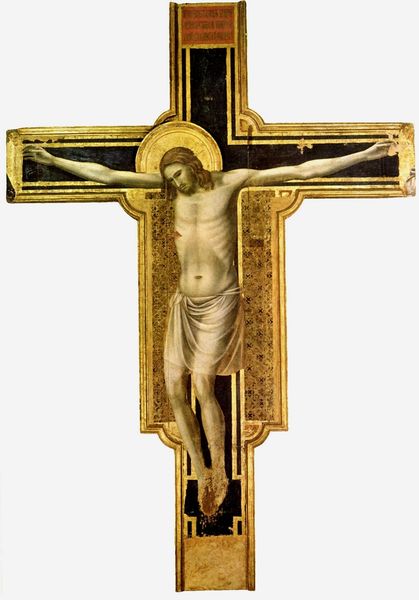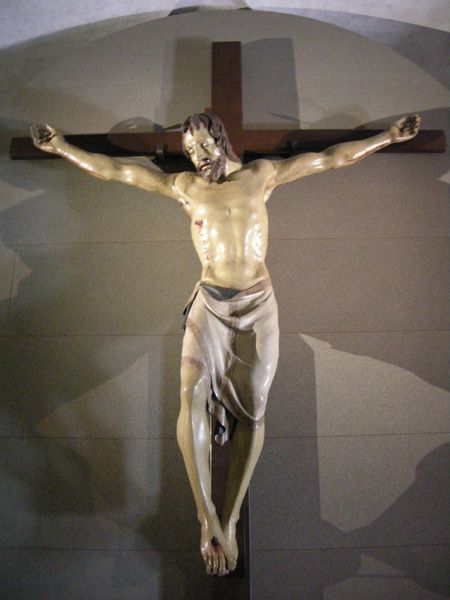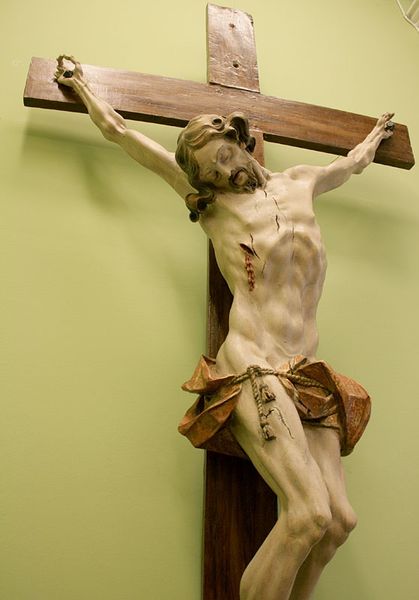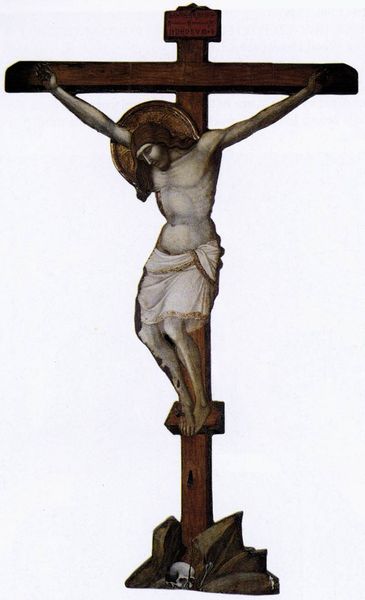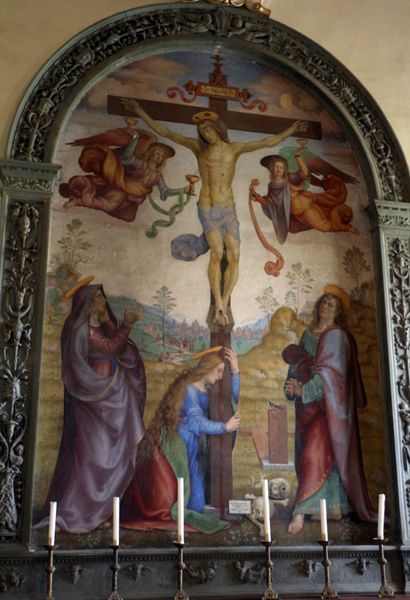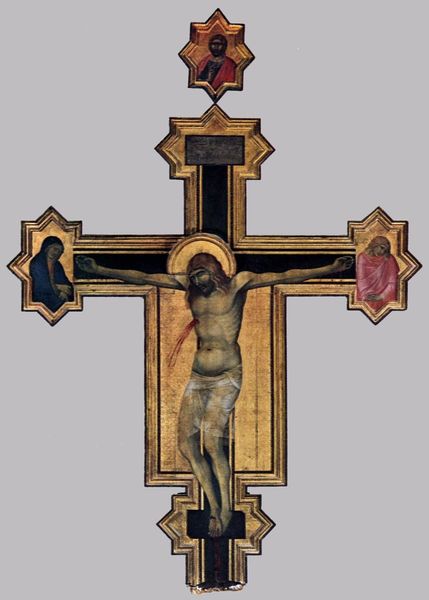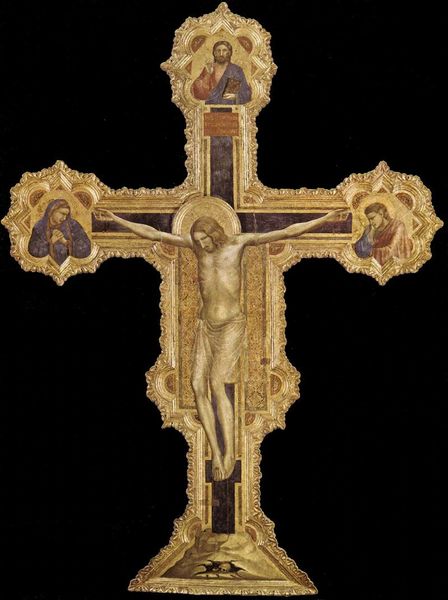
tempera, painting
#
medieval
#
tempera
#
painting
#
sculpture
#
figuration
#
cross
#
history-painting
#
italian-renaissance
Copyright: Public domain
This is a painted crucifix made by Luca di Tommè around the 14th century. It’s made with tempera on wood, a traditional technique for the time. Think about how the artist used the wood's surface, its grain and texture, to create the artwork. The wood isn't just a passive support, it's an active participant in the making process. The work involved in preparing the surface, applying the gesso, and then carefully painting with tempera, would have been considerable. The cross is embellished with gold leaf, a luxury material that adds to its visual impact and symbolic value. Consider the social and cultural context in which this work was made. In the medieval period, the production of art was often a collaborative effort, with artists working in workshops. A work like this speaks to a network of skilled labour and a deep understanding of materials, blurring any line we might draw between art, craft, and industry. The value of this piece comes not only from its religious meaning, but from the labor and the accumulated knowledge that went into its creation.
Comments
No comments
Be the first to comment and join the conversation on the ultimate creative platform.
